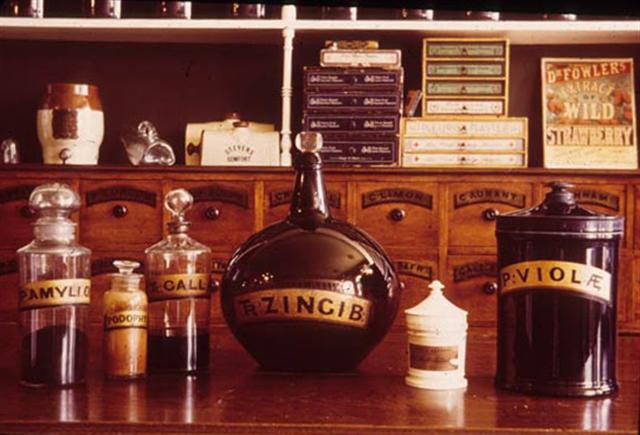|
The Harvey Years
1833 - 1851
 
James Harvey
During the years he operated the pharmacy, James Harvey became active in the affairs of Niagara, as did many of his successors in the practice. He was appointed a judge in the community and in 1845 was elected to Niagara's first Council after its incorporation. He was also one of the five members of the Board of Police. In 1848, he became a charter member of the Board of Directors of the Niagara Mechanics Institute that would later evolve into the town's public library. In addition, he was a member of the committee to erect the new fire bell and later became secretary of the Niagara Fire Company. James Harvey also owned another pharmacy in St. Catharines nearby, not an unusual situation at the time.
Unfortunately, James Harvey died suddenly of consumption, now known as pulmonary tuberculosis, at the early age of 44 years, in October 1851. Henry Paffard, who had served as an apprentice with Harvey, operated the pharmacy briefly for the Harvey family, then purchased and assumed the practice, January 1, 1852.
In spite of the relatively short time during which Harvey had operated his pharmacy, he maintained a very real presence through the most relevant artifacts in the present museum, as well as the surviving archival records, particularly the prescriptions of his era. It was Harvey, who early in his practice is reputed to have imported from Britain all the containers on the shelves along the wall to the right and some along the back that first catch the eyes of the visitors who enter the Niagara Apothecary Museum. They include the large green demijohns along the upper shelves, as well as the attractive cobalt blue jars on the next shelves below, as well as the smaller clear glass tinctures and salt mouths on the two rows of shelves below. Furthermore, the matching gilt labels that grace the containers also carry on for the wooden bins and drawers below the shelves. (above you can see representative Harvey containers, with drawers, bins and shelves in the background.)

All in all, it is quite a remarkable fact that these jars and bottles survived to permit Harvey to remain part of the legacy continued by his apprentice Henry Paffard, who had those shelves, bins, and drawers installed as part of his grand vision when he moved the practice to its present location in 1869.
Indeed, the containers remained when Paffard sold the pharmacy in 1898 to his apprentice, James DeW. Randall, and he in turn to Arthur James Coyne in 1914. Coyne, like Harvey, also owned a pharmacy in St. Catharines, to which he returned in 1922, when he in turn sold the practice to the last owner, Erland Field. However, those wonderful containers left with Coyne to be carefully preserved until he very generously returned the surviving ones for a very modest sum indeed at the time of the restoration of the Niagara Apothecary and it's re-opening in 1971. A small number of the containers had found their way, through several pairs of hands, to the Academy of Medicine, Toronto, via whose museum they also returned at the time of the restoration to join their glass and pottery counterparts back on the shelves.
 
|


